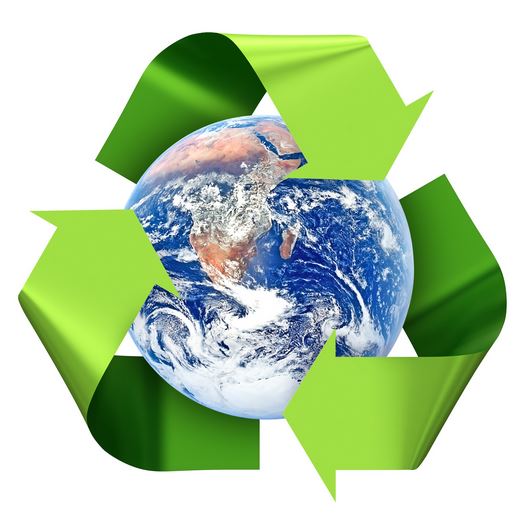10 Interesting Facts About Earth


- Introduction
- Alien worlds may be all the rage, with their mystique and promise, but the orb we call home, planet Earth, has all the makings for a jaw-dropping blockbuster movie: from the drama of explosive volcanoes, past meteor crashes and catastrophic collisions between rocky plates to the seeming fantasy of the ocean's deep abysses swirling with odd life and tales of the coldest, hottest, deepest, highest and all-out extreme spots.
- Did you know Earth is not actually a sphere? That we are rocketing around the sun at 67,000 mph? That the majority of Earth's fresh water is locked up in Antarctica?
2. We're the third rock from the sun
- Our home, Earth, is the third planet from the sun and the only world known to support an atmosphere with free oxygen, oceans of liquid water on the surface and — the big one — life. Earth is one of the four terrestrial planets: Like Mercury, Venus, and Mars, it is rocky at the surface.
- Keep reading to find out why Earth is not a sphere, even though it is often said to be.

3. Earth is a squashed sphere
- Earth is not a perfect sphere. As Earth spins, gravity points toward the center of our planet (assuming for explanation's sake that Earth is a perfect sphere), and a centrifugal force pushes outward. But since this gravity-opposing force acts perpendicular to the axis of Earth, and Earth's axis is tilted, centrifugal force at the equator is not exactly opposed to gravity. This imbalance adds up at the equator, where gravity pushes extra masses of water and earth into a bulge, or "spare tire" around our planet.

4. The planet has a waistline
- Mother Earth has a generous waistline: At the equator, the circumference of the globe is 24,901 miles (40,075 kilometers). Bonus fact: At the equator, you would weigh less than if standing at one of the poles.
- Keep going . . . you're going to be surprised to learn just how fast you are moving right now.

5. Earth is on the move
- You may feel like you're standing still, but you're actually moving — fast. Depending on where you are on the globe, you could be spinning through space at just over 1,000 miles per hour. People on the equator move the fastest, while someone standing on the North or South pole would be perfectly still. (Imagine a basketball spinning on your finger. A random point on the ball's equator has farther to go in a single spin as a point near your finger. Thus, the point on the equator is moving faster.)
- And, as you'll learn on the next slide, we're also racing around the sun at an incredible speed.

6. The planet moves around the sun
- Oh yeah, and the Earth isn't just spinning: It's also moving around the sun at 67,000 miles (107,826 km) per hour.
- Do you know how old Earth is? Keep going to find out.

7. Earth is old
- Researchers calculate the age of the Earth by dating both the oldest rocks on the planet and meteorites that have been discovered on Earth (meteorites and Earth formed at the same time when the solar system was forming). Their findings? Earth is about 4.54 billion years old.
- (Photo shown here, what may be the oldest known rocks on Earth, called the Nuvvuagittuq Belt on the coast of the Hudson Bay in Northern Quebec, and dating back to 4.28 billion years ago, scientists estimate.)

8. The planet is recycled
- The ground you're walking on is recycled. Earth's rock cycle transforms igneous rocks into sedimentary rocks to metamorphic rocks and back again.
- The cycle isn’t a perfect circle, but the basics work like this: Magma from deep in the Earth emerges and hardens into rock (that's the igneous part). Tectonic processes uplift that rock to the surface, where erosion shaves bits off. These tiny fragments get deposited and buried, and the pressure from above compacts them into sedimentary rocks such as sandstone. If sedimentary rocks get buried even deeper, they "cook" into metamorphic rocks under lots of pressure and heat.
- Along the way, of course, sedimentary rocks can be re-eroded or metamorphic rocks re-uplifted. But if metamorphic rocks get caught in a subduction zone where one piece of crust is pushing under another, they may find themselves transformed back into magma.
9.Our moonquakes
- Earth's moon looks rather dead and inactive. But in fact, moonquakes, or "earthquakes" on the moon, keep things just a bit shook up. Quakes on the moon are less common and less intense than those that shake Earth.
- According to USGS scientists, moonquakes seem to be related to tidal stresses associated with the varying distance between the Earth and moon. Moonquakes also tend to occur at great depths, about midway between the lunar surface and its center.
- Keep going to find out what was the largest earthquake ever.
10. Alaska had the largest earthquake
- As of March 2016, the largest earthquake to shake the United States was a magnitude-9.2 temblor that struck Prince William Sound, Alaska, on Good Friday, March 28, 1964. (Photos shows the Four Seasons Apartments in Anchorage, a six-story lift-slab reinforced concrete building, which cracked to the ground during the quake.) And the world's largest earthquake was a magnitude 9.5 in Chile on May 22, 1960, according to the U.S. Geological Survey (USGS).




No comments:
Post a Comment